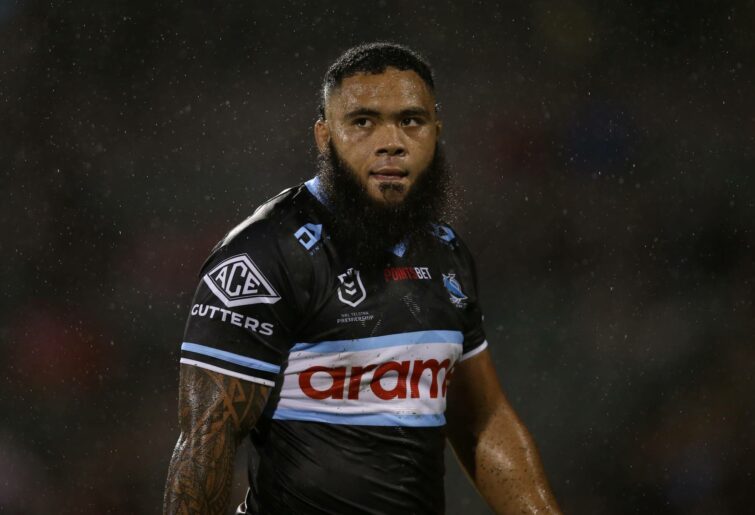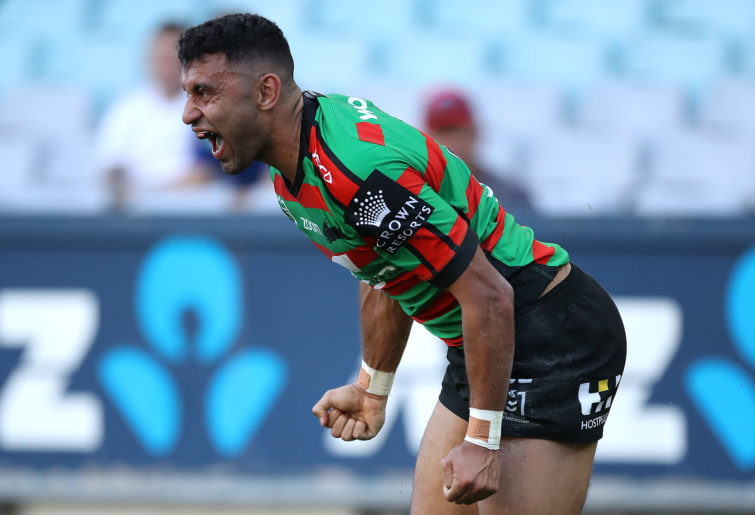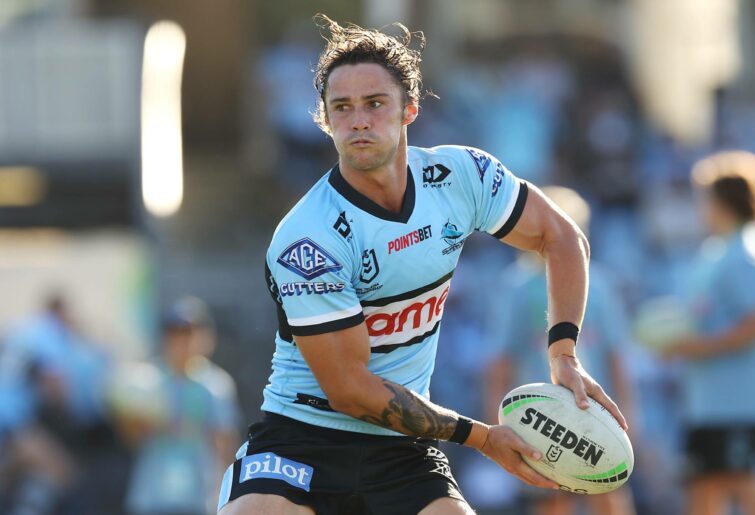Brad Arthur claims Trbojevic offside before Eel's sin-bin - and he might have been right
Brad Arthur believed Tom Trbojevic was offside before Will Penisini was binned for a professional foul. Brad Fittler confirmed Penisini was unlucky
Opinion
Late last year I debuted the proportion of positive engagement (POPE) player rating system on The Roar and applied it to select a 2021 NRL team of the season.
POPE’s debut generated a mix of interest, indifference and ‘what is this guy on about?’. Regardless, I thought I’d give it another run now that we’ve reached the halfway point of 2022.
Even if you’re already familiar with POPE, it’s worth revisiting what it is and, importantly, what it isn’t.
POPE is not a comprehensive value measure. For example, it doesn’t capture the value of Adam Reynolds’s kicking or fully appreciate Isaah Yeo’s quarterbacking.
POPE is an impact measure, a composite of the statistics widely available to the public that every NRL player can accrue in significant numbers. Contributions that facilitate attacking play and pointscoring carry greater weight than bulk attacking and defensive stats. Because different players accrue numbers differently, comparisons are only valid within positional categories.
Why do it this way? Rugby league’s widely available statistics aren’t much good at explaining the difference between Isaah Yeo and Josh Jackson. They’re all nuts and bolts and no architecture.
But we might as well do something useful with them. POPE is the nuts and bolts of rugby league expressed in a single number. That number is an abstraction. A score of 520 means 5.2 net positive engagements per 80 minutes of playing time. I just jazzed it up a bit.
To be eligible for the team, players must exceed the mean playing time within their positional category. Without further ado, here’s the NRL team of the mid-season.
1. James Tedesco, Sydney (738 POPEs)
Latrell Mitchell nearly broke the POPE formula last season and might do so again if he can get back on the field. Tom Trbojevic is seemingly done for the year. It’s been Tedesco, Ryan Papenhuyzen and daylight so far in 2022.
Like Dylan Edwards, Tedesco never stops running, but he produces a far greater attacking output from the same effort. Edwards runs slightly further than Tedesco per 80 minutes. Tedesco produces twice as many tackle breaks, three times as many line breaks and more than twice as many tries.
Honourable mention: Ryan Papenhuyzen, Melbourne (730)

James Tedesco (Mark Metcalfe/Getty Images)
2. Ronaldo Mulitalo, Cronulla (705)
It’s reasonable to conclude that Mulitalo’s vaulted over the rest of the NRL’s wingers on the back of the next man on this list, his partner in crime on Cronulla’s lethal left edge.
But the numbers also indicate that it’s a symbiotic relationship. They complement each other well on both sides of the ball. The next best winger-centre combination, Valentine Holmes and Murray Taulagi, combine pretty well in attack but seem to struggle much more in defence.
Honourable mention: Selwyn Cobbo, Brisbane (674)
3. Siosifa Talakai, Cronulla (637)
Here he is, the man of the hour. Even with a recent downturn in form, Talakai has blown away the field in the first 12 rounds. If you saw this coming, please make yourself known.
The raw numbers reflect what registers with the eye. He’s not just a destructive ball runner, he can be utterly devastating. He’s not just size and brute force, he’s got decent speed, footwork and soft hands.
This type of player rarely maintains such performance for long. Some might recall Tonie Carroll rampaging onto the scene amid dazed and strewn defenders in the mid-1990s. Konrad Hurrell flickered but ended up in Super League. Let’s hope Talakai can keep it going.
Honourable mention: Valentine Holmes, North Queensland (573)

(Photo by Jason McCawley/Getty Images)
4. Justin Olam, Melbourne (592)
Last season’s king of centres has maintained his fine form despite being provisionally dethroned.
St George Illawarra’s Moses Suli has matched and even exceeded Olam in a few statistical categories, but Olam’s a better defender and can pass the ball effectively at and in the defensive line. It makes a difference.
Honourable mention: Moses Suli, St George Illawarra (564)
5. Alex Johnston, Souths (682)
You might’ve noticed that all bar one of the three-quarters mentioned so far play on the left edge. Is that just the natural inclination of teams, to attack from right to left and then kick back to their opponent’s left edge, where most teams place their stronger winger?
Johnston feasts on Souths slick right-to-left attack, with 11 more tries registered so far in 2022. But he’s much more than that. While Daniel Tupou (664) has a higher work rate, Johnston has him covered in terms of run metres per carry. Josh Addo-Carr’s numbers (639) are down after his move to Canterbury, but it’s not like he was doing anything other-worldly last year.
Defence could be the issue. Whatever the case, it’d be interesting to know why Johnston rarely rates a mention come State of Origin time.
Honourable mention: Taylan May, Penrith (666)

(Photo by Mark Kolbe/Getty Images)
6. Cameron Munster, Melbourne (553)
At the end of last season Cody Walker romped his way to the POPE award while an out of sorts Munster limped out of the finals and into an off-season of ignominy.
How the tables have turned. Munster’s back and making New South Wales supporters very nervous. Parramatta’s Dylan Brown is the only stand-off with a hope of catching him, all things remaining equal. Walker’s languishing in seventh place on 473.
Honourable mention: Dylan Brown, Parramatta (531)
7. Nicho Hynes, Cronulla (529)
Jahrome Hughes would’ve been here again but for an injury that saw him miss the eligibility cut-off. Mitch Moses and Ben Hunt are better facilitators, but neither can tackle to save their lives. Adam Reynolds just doesn’t have Hynes’s running game.
Hynes’s numbers look like he’s a fullback playing half. He is, I suppose. So is Jahrome Hughes. Interesting times at halfback.
Honourable mention: Daly Cherry-Evans, Manly (490)

(Photo by Mark Kolbe/Getty Images)
8. Josh Papalii, Canberra (502)
Papalii and Joseph Tapine are statistically the best front-row combination in the NRL. I’d go for Tapine in his current form, but the numbers show that Big Papa’s the more efficient of the two. He squeezes more positive impact into his game time, including more effective second-phase play. It reads like experience to me.
Honourable mention: David Klemmer, Newcastle (494)
9. Harry Grant, Melbourne (473)
The acting half position is changing. Most don’t run much either because they spend most of their time linking with a ‘quarterback’ like Yeo, Victor Radley or Jake Trbojevic or because they’re capable of hitting a moving target from distance, like Reed Mahoney (407) and Blayke Brailey (428).
Grant straddles the change. Only Damien Cook and Reece Robson run the ball more, while nobody is better at hitting a moving target.
Honourable mention: Damien Cook, Souths (459)

(Photo by Chris Hyde/Getty Images)
10. Payne Haas, Brisbane (502)
There’s no question Haas is one of the best props in the game. The question in recent days is whether he’s $300,000 better than the rest of the elite.
Haas’s resume is all about impact, and he can maintain a high-impact running and defensive game longer than anyone. Somebody will probably give him the money he’s after, but they’d be mad to go beyond two years.
If I were running a team that’d somehow opened a premiership window and had $850,000-plus to spend on a high-impact prop, I’d throw it at Nelson Asofa-Solomona.
Honourable mention: Addin Fonua-Blake, New Zealand (492)
11. Viliame Kikau, Penrith (499)
Kikau made his name as a destructive ball runner, and he still is. This is only part of his contribution to Penrith though. The quality of his link play with Jarome Luai and Stephen Crichton shows up in the stats, as does his defensive contribution.
Kikau and Liam Martin miss lots of tackles. Luai and Nathan Cleary don’t have to make many. It seems to work. Kikau and Martin aren’t too bothered about completing tackles; they’re disruptors. More on this in the next article.
Honourable mention: Luke Garner, Wests (479)
12. Luciano Leilua, Wests (480)
Here’s a surprise. Leilua beat David Fifita, Ryan Matterson and Jaydn Su’A because they all missed the cut. He also beat Jeremiah Nanai and Isaiah Papali’i, among others, on points alone.
Leilua’s a mix of the big metre eaters like Matterson, Tom Gilbert and Heilum Luki and the better defensive back-rowers like Luke Garner and Tyson Frizell. He looks like a good signing for the Cowboys, with Gilbert leaving for Redcliffe and Luki still a work in progress.
Honourable mention: Isaiah Papali’I, Parramatta (478)
13. Isaah Yeo, Penrith (462)
I’ve already said plenty about the excellent Yeo. POPE doesn’t do him justice. Had Jason Taumalolo played 15 more minutes in the first 12 rounds, he’d have finished top of the POPEs.
Honourable mention: Tino Fa’asuamaleaui, Gold Coast (462)